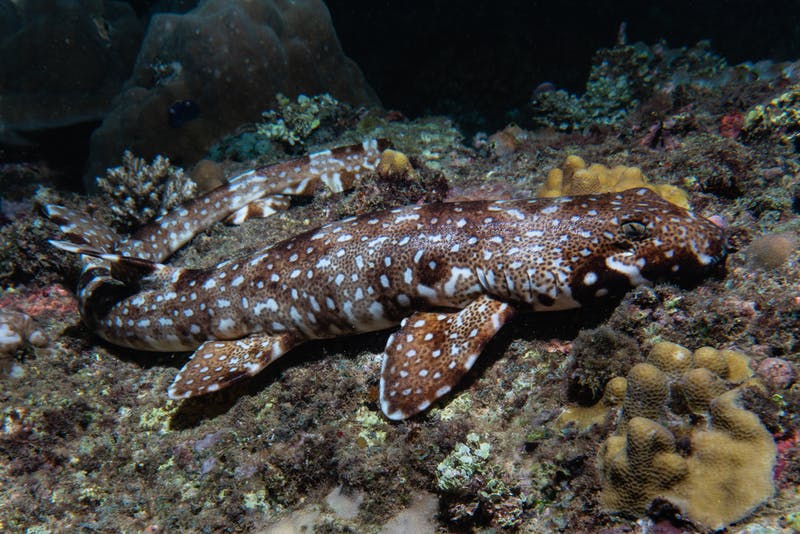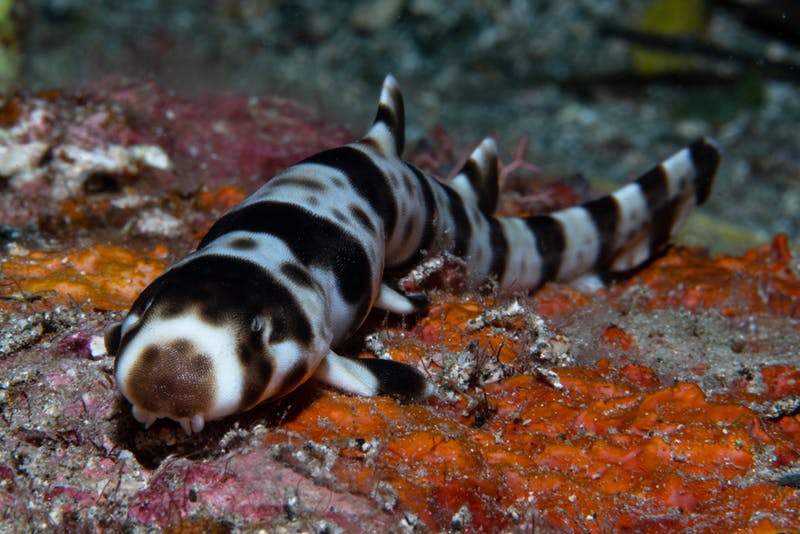You’ve got to walk before you can run — even if you’re a newly evolved shark looking to make a splash on dry land.

Scientists have discovered four new species of sharks that can walk around on the ocean floor, following a 12-year study of marine life in the waters between northern Australia and New Guinea. All four species appear to have evolved fairly recently, according to findings published in the journal Marine and Freshwater Research.
The sharks don’t have legs, but video shows they’ve become pretty good at walking around on the ocean floor with their fins, much like a seal or otter.
“They can even walk on land for a bit,” study co-author Mark Erdmann said in a Q&A with his organization, Conservation International.
The four newly discovered species live in the coastal waters around northern Australia and New Guinea, where they are among the top predators in their ecosystems. They likely rose to the top by evolving the capacity to walk on reefs in the shallow waters of low tide, according to Christine Dudgeon, a University of Queensland researcher who worked on the study.
“Their ability to withstand low oxygen environments and walk on their fins gives them a remarkable edge over their prey of small crustaceans and molluscs,” Dudgeon said in a news release from the university.
“These unique features are not shared with their closest relatives the bamboo sharks or more distant relatives in the carpet shark order including wobbegongs and whale sharks.”
All four shark species measure about one metre long and do not pose any threat to humans, she said.
The study was a joint effort by Conservation International, Australia’s Commonwealth Scientific and Industrial Research Organization (CSIRO), the Indonesian Institute of Sciences and the University of Florida.
The paper suggests that these walking sharks evolved after they moved away from their original population about two million years ago, in a process known as speciation.
“If they are lucky enough to survive and breed, eventually evolution will take this new population in a different direction and often leads to a new species,” Erdmann told Conservation International.
The sharks might have swum away on their own, or they might have hitched a ride on a floating reef or a moving island that carried them far away through tectonic shifts.
The sharks’ DNA was similar to other members of the Hemiscylium genus, which has been around for 66-100 million years.
The discoveries bring the total number of known walking shark species to nine, although Dudgeon suspects there are more still to be identified. They all live in the waters between Australia and New Guinea, which means they’re more vulnerable to extinction through a catastrophe or changing sea levels due to climate change.
Walking sharks are relatively new in evolutionary terms. The process of evolution can take millions of years, so it will likely be a long time before a shark takes its first step onto solid land.
That means you don’t have to worry about “Land Jaws” chasing you on the beach. For now.






Comments